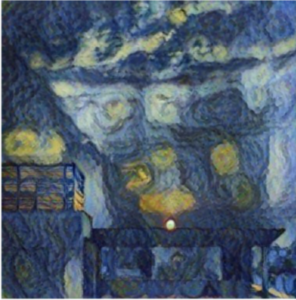For decades, the global consensus has been that only human creations can be protected by copyright. Yet, with the ever-growing presence of Artificial Intelligence (AI) generated content infiltrating the creative domain, the foundations of human authorship are being challenged.
In countries like Canada and the US, copyright protection is conferred automatically when a work is created without registering or complying with any other formality.1 As such, copyright registration itself is entirely optional. Nonetheless, authors and creators often find it prudent (as they should) to seek formal registration for different reasons, such as facilitating publication, establishing evidence of authorship, and simplifying the transfer of rights, among many others. Generally speaking, if a work is to be protected by copyright, it must satisfy specific criteria, namely, originality2, expression3, and fixation.4
In practice, the journey to copyright registration begins with an application filed at the local copyright office, where it undergoes review by the registrar. If the work meets all the required criteria, registration will be granted. In some countries, however, this review process has been somewhat (or totally) automated, making registration not only faster, but easier to obtain to some extent. Yet, as alluring as the automation of time-consuming processes may be, it has brought in some undesired side effects.
AI as an Author in Canada
Back in December 2021, the Canadian Intellectual Property Office (“CIPO”) granted registration for a 2D work entitled “Suryast” (the “Image”)5, in favour of two authors, a human, and an AI-powered painting app called RAGHAV AI (“RAGHAV”). The Image is the result of splicing a photograph taken by the human author with Vincent Van Gogh’s famous “Starry Night” painting’s “style” through RAGHAV.
These are the original spliced works:

And this is the final Image:

Despite its controversial nature, the Image’s copyright and authorship had not been formally challenged until July 8, 2024, when the Canadian Internet Policy and Public Interest Clinic (“CIPPIC”) decided to take action by applying to the Federal Court to expunge or rectify the Image’s registration.6 The CIPPIC is asking the Court to declare that the Image is devoid of copyright protection or, alternatively, that the copyright belongs solely to the human author. CIPPIC’s argument for rectification portrays two possible outcomes: either the Image lacks originality and so does not enjoy copyright at all, or, a non-human cannot be an author under the Canadian Copyright Act (the “Act”).
CIPPIC’s concern revolves around the following issues:
The Image’s registration sets a precedent that CIPO recognizes AI authorship of copyrighted works;
Listing an AI system as an author suggests that the Act includes non-human entities;
CIPO could be potentially granting copyright registrations instantaneously without verification of the requirements set forth in sections 54 and 55 of the Act;
An AI program is not a legal entity capable of being an author under Canadian copyright law; and,
Canadian jurisprudence has uniformly interpreted the word “author” to refer only to a human being or a natural person.
Beyond these issues, other questions surrounding this registration and copyright authorship in Canada spring to mind: Can the act of inputting prompts on AI programs constitute sufficient skill and judgment to make a resulting image an original work? If RAGHAV is acknowledged as an author, will it be entitled to moral rights, (traditionally reserved for human creators)? If so, how will these rights be enforced?
Only time will tell as hopefully all these questions may be addressed by the Court in the coming months.
Suryast’s Registration Overseas
Canada is not the only country where registration of the Image was pursued.
The U.S. Copyright Office (the “USCO”) refused registration of the Image because it “lacked the human authorship necessary to support a copyright claim” back in 2022. Then, after two reconsideration requests filed by the human author, the Review Board of the USCO issued a letter7 in December 2023, through which it affirmed the refusal of registration. The Review Board backed its decision by citing Thaler v. Perlmutter, stating that “human authorship is a bedrock requirement of copyright” and that the use of prompts or the author’s “choices” to direct the AI program to create the Image constitutes an “unprotectable idea of the work”, leading to the basic copyright concept that protection is given only to the expression of the idea, not the idea itself.
In India, registration for the Image was granted, however, it was withdrawn shortly thereafter.
We at GME Law are looking forward to hearing the Federal Court’s stance on copyright and authorship derived from artificially generated content, so stay tuned for future updates!
And, if you’re interested in topics involving AI and privacy law, check out our previous article on the topic.
1 Berne Convention for the Protection of Literary and Artistic Works of 1886
2 The creation of the work must be the result of someone’s own creativity.
3 Materializing an idea, ideas by themselves are not protectable.
4 Fixing the expression of an idea in a material format that can be perceived, reproduced or otherwise communicated.




